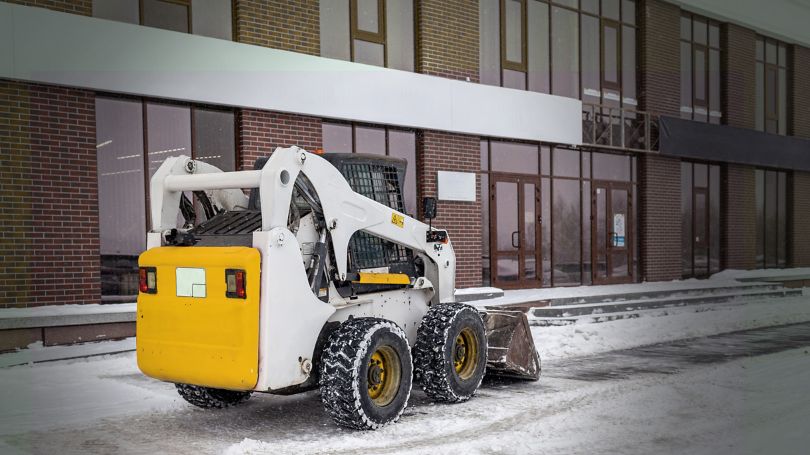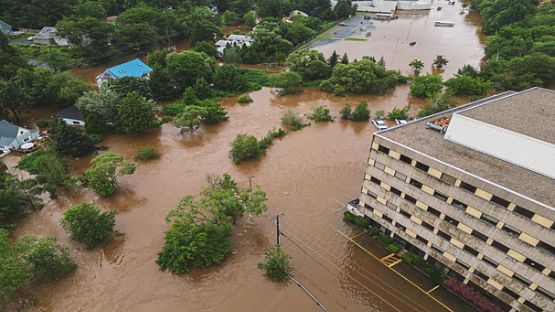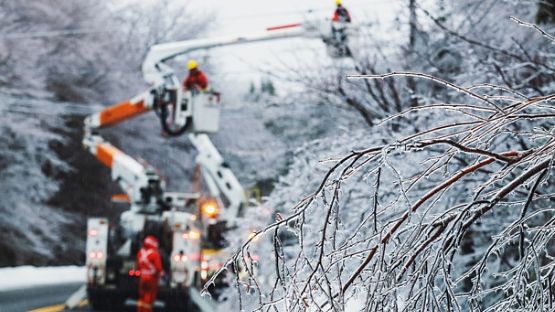As winter approaches, it’s important to prepare commercial buildings for cold weather, including inspecting and ensuring maintenance is done in all areas and training staff on identifying, mitigating, documenting and communicating any issues.
When these winterizing steps are skipped, property damage tends to follow.
Every year we receive weather-related building claims and a lot of them can be prevented by winterizing your property. Frozen pipes are one of our largest loss drivers in winter. Many times, the situation is exacerbated by staff not being trained on where to find the shut-off valve and how to operate it. Every second counts when water is gushing from broken pipes; water damage is particularly difficult to remediate and can create extensive damage that can lead to lengthy repairs. In some cases, portions are missed and needs to be corrected years later.
Whether it’s damage due to water or other weather-related issues, many building managers rely on their insurance policy to clean up these problems rather than put the effort into prevention. However, if you end up making a lot of claims, your insurance premiums and deductibles are likely to go up.
Winterize your building to prevent ice and water damage
Fortunately, there are simple actions that building managers can do to prevent costly problems. Pre-winter inspections can be done in-house to help prevent damage and to ensure that everything from your heating system to your roof are in good condition. It’s a matter of being thorough and reviewing all aspects of the building, looking for wear and tear, and calling in professionals when needed.
Here’s a checklist to winterize your building.
Exterior inspection and preparation
Roof Inspection:
- Inspect the roof for damaged or missing shingles, flashing, or membrane.
- Clear debris, leaves and snow from roof drains, gutters and downspouts.
- Ensure all roof vents and exhausts are in good condition and not blocked.
Exterior walls and windows:
- Seal any cracks or gaps in exterior walls to prevent drafts.
- Inspect windows and doors for air leaks and seal or weatherstrip, as needed.
- Consider installing storm windows if not already in place.
Foundation and drains:
- Inspect the foundation for cracks and repair any damage.
- Clear debris from perimeter drains to prevent ice buildup.
Landscaping:
- Trim tree branches that could potentially damage the property during heavy snow or ice.
- Remove dead vegetation and debris from the premises.
Sidewalks and parking lots:
- Repair any damaged pavement or concrete to prevent trip hazards.
- Stock up on ice melt or sand for de-icing walkways and parking lots.
Interior inspection and preparation
HVAC system:
- Schedule an HVAC inspection to ensure proper heating and ventilation.
- Replace air filters and clean ducts if necessary.
- Consider installing programmable thermostats to optimize heating.
Plumbing:
- Insulate exposed pipes to prevent freezing and potential bursts.
- Verify heat trace all or local heating is operating as designed.
- Locate and label water shut-off valves in case of emergencies.
Fire safety:
- Test and maintain fire sprinkler systems and fire alarms.
- Have dry systems and glycol systems inspected.
- Ensure fire hydrants and access roads are clear and accessible.
Electrical systems:
- Ensure backup power sources like generators are in working order.
Emergency supplies:
- Stock up on emergency supplies, including flashlights, batteries, first-aid kits, and blankets.
Insulation:
- Check insulation in attics, walls, and crawl spaces and add insulation, as needed.
Equipment and machinery
Machinery maintenance:
- Schedule maintenance for machinery to ensure proper functioning during cold weather.
Emergency planning
Emergency contact list:
- Create or update a list of emergency contacts, including maintenance personnel, utility companies, and local emergency services.
Winter storm plan:
- Develop a winter storm response plan that includes procedures for snow removal, employee safety and communication.
- Additional considerations when you winterize your building
Snow removal and ice management:
- Arrange for a reliable snow removal service to clear parking lots and walkways promptly.
- Ensure there is an adequate supply of salt, sand or ice melt on hand for safety.
Security:
- Review and enhance security measures, such as outdoor lighting and surveillance systems.
Employee training:
- Train employees on winter safety procedures, including the proper use of space heaters and safe snow removal practices to ensure safety and prevent damage.
Documentation:
- Maintain records of all winterization efforts, inspections, and repairs.
Communication:
- Communicate winterization plans and procedures to all employees and tenants.
Regular maintenance and proactive planning can help prevent costly damage and disruptions during the winter months. Remember to adapt this winterizing checklist to the specific needs and conditions of your commercial or industrial property.
Want more information on winterizing your building?
Aviva Risk Management Solutions has risk consultants across Canada to provide our customers with expert advice and resources. Reach out to us at arms.canada@aviva.com.













